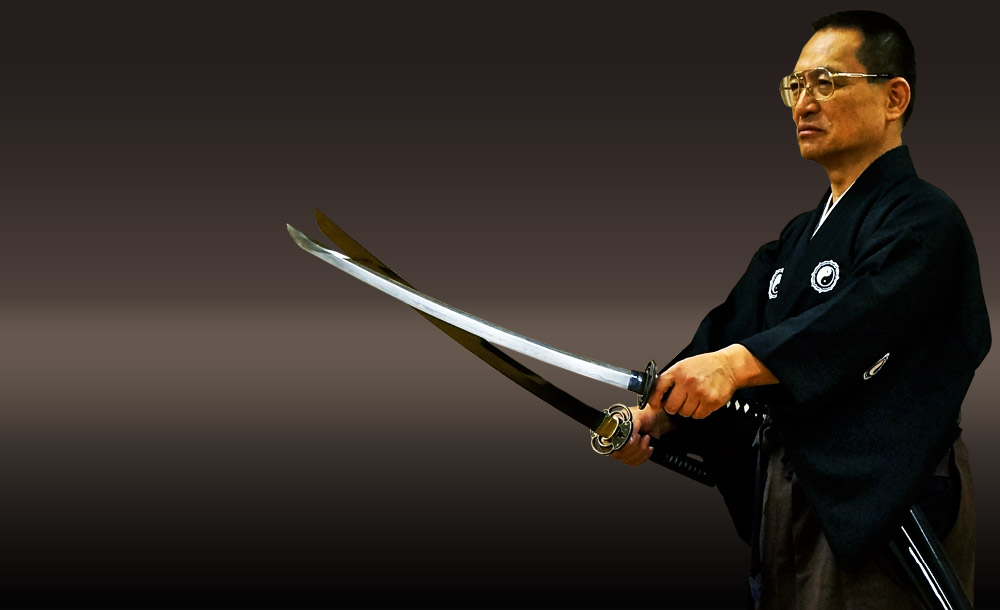Two-sword style of the Samurai
Genko Nito Ryu is a style recompiled from Yamaguchi-ryu, which was established in the 6th year of Genna (1620).
It focuses exclusively on fighting with two swords. Here, the student learns kata, kumitachi and tameshigiri with the katana and the wakizashi. The wakizashi is similar to the katana, but has a shorter blade with a length between 30 and 60 centimetres. The main principle of Genko Nito Ryu includes cutting with closest and quickest movements. This results in saving time and energy.
History
Yamaguchi-ryu is a style founded by Yamaguchi Umanosuke Ietoshi (His “go” was Bokushinsai) who was born in 1582, 2 years earlier than Miyamoto Musashi (1584). At the time of its founding, Yamaguchi-ryu only had three nito-ryu kata and two tachi kata. At a later date, Shintomita, a pupil of Yamaguchi’s added seven tachi kata and seven kodachi (wakizashi) kata. These tachi kata were referred to as the “omote” kata, while the kodachi kata were called the “ura”. The style was passed down through the Toyama-han, a branch of the Maeda-han.
The founder of Mugai Ryu, Tsuji Gettan, opened a dojo in Edo as a recipient of menkyo-kaiden in Yamaguchi-ryu, but as a swordsman from the countryside he did not have many students. After an extensive period of zazen for 20 years, Gettan revised his Yamaguchi-ryu teachings into Mugai Ryu in 1693 at 45years old.
After training thoroughly in Mugai Ryu, we research the roots of Mugai Ryu (Yamaguchi-ryu), and we can rediscover the Nito Ryu from the time of Yamaguchi-ryu’s founding.
Nito Ryu is more advantageous than Itto Ryu. Even Miyamoto Musashi said, “If you can use your left and right arms equally, Nito Ryu is more advantageous than Itto Ryu.” This is extremely natural and can be easily understood through Nito Ryu training.
Philosophy
However, kenjutsu employs technqiues that are killing („life taking“) techniques that affect both opponents in a duel. If the neck is cut, the person dies. Modern kendo is a sport, and therefore “death” is not a part of its underlying philosophy. As a result, only certain areas are counted as points if hit by a participant.
We understand that death is certain when cut or stabbed by a sword, and this fundamental understanding is central to our training. Therefore, our students regularly train their technique by cutting wrapped mats made of igusa grass called tatami omote. They are intended to simulate a human body part.
In our Genko Nito Ryu training, it is possible to practice all aspects of sword fighting in Gekken. In addition to the bogu (armor) and the shinai (bamboo sword) in the length of the katana, the student also carries a shorter shinai for the wakizashi. This makes it possible to train muscle memory in a free fight. In addition, students learn how to hit and be hit within a safe environment.

